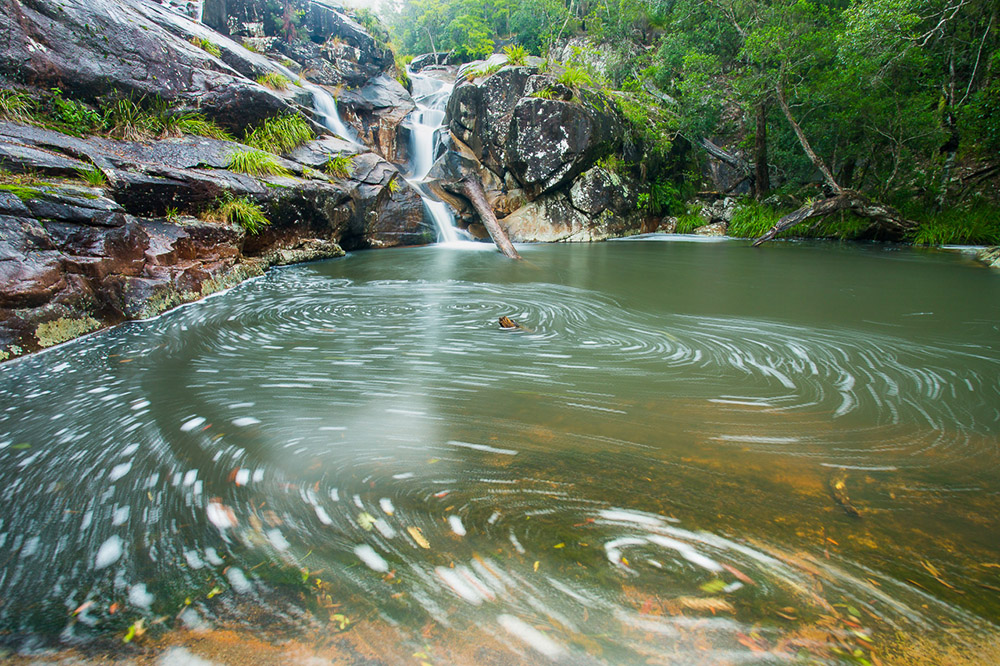Creative use of shutter speed and using neutral density (ND) filters to show movement during the day
How is it in those crowded tourist spots do some photographers capture images with no people in them? Are they spending hours in Photoshop removing them? Maybe, but more than likely they are using a 10-stop Neutral Density filter to ‘ghost’ away the tourists.
When you use an ND filter it allows you to slow your shutter speed down significantly thus blurring movement in your scene.
Make sure you checkout my new in-depth article The Ultimate Guide to Shutter Speed in Photography for more tips and lots of examples of how shutter speed is used in photography.
Ghosting crowds
How do you get rid of crowds? Simply add a neutral density filter and get your subject to stand dead still for 6 whole seconds. Here I got my son Wesley to stand still while I photographed him using a 10 stop ND filter to darken the daylight entering my camera so that it would allow me to slow down the shutter speed to 6 seconds, thus blurring all the movement made by the passing tourists. I used a sturdy tripod of course.
Questions about which filters are best for you and your photography?
Take a look at this video as we walk through the different types of filters and what they do.
How to create long exposure images in the daytime
If you want to create long exposures during the daylight hours you’ll need a tripod, a sunny day and your ND filters. When you put an ND filter over your lens it blocks the majority of the light coming in your lens. This allows you to use slower shutter speed and create long-exposure images. This is the technique used to ‘ghost’ the people or make them completely disappear from the shot.
It’s a good idea to use a black cloth or something to block your eyepiece in order to prevent any light from getting in when you are shooting long-exposures like this.
Practice taking shots with different exposure times until you get the look you want. Typically a two-second to six-second exposure time works well for getting the ghosting effect. If you take that a bit further and use two to three-minute exposures, the people will appear to disappear from the scene.
The Ultimate Guide to Shutter Speed in Photography

Stacking filters (ND and Polarizing filter)
Anytime you are using filters take some time to go through different settings to see how it affects your images. When you are photographing landscapes use a circular polarizer, a neutral density filter, a graduated ND filter and a 10-stop ND filter and watch how each one changes your image and your settings.
If you’d like to learn more about photographing using filters and creating long exposure images then checkout my Long Exposure Photography Course.
Bubble patterns (very slow shutter speed – long exposure)
This is what I love about landscape photography using Neutral Density (ND) filters, you can get super creative. Here I used a ND filter to darken the light coming into my camera which allowed me to slow down my shutter speed to 10 seconds which creates these really cool bubble patterns. Without the ND filter the slowest I can get my camera to go is about 1/2 second before my image becomes over-exposed and too light. Even closing down my aperture to f/22 doesn’t help. Sometimes I stack a neutral density filter (for long exposures) as well as a circularising filter to reduce the glare on the water too.
Related Articles
Did you enjoy this article? Check out these related articles, too:
- The Ultimate Guide to Shutter Speed in Photography
Shutter Speed and Photography: Everything You’ve Ever Wanted to Know - Model Kick & Shutter Speed
What is the best shutter speed to capture the movement of a model kicking water? - Shutter Speed in Photography (examples)
Do This Now
Please leave me a comment below – I’d love to know what you think. Brent


